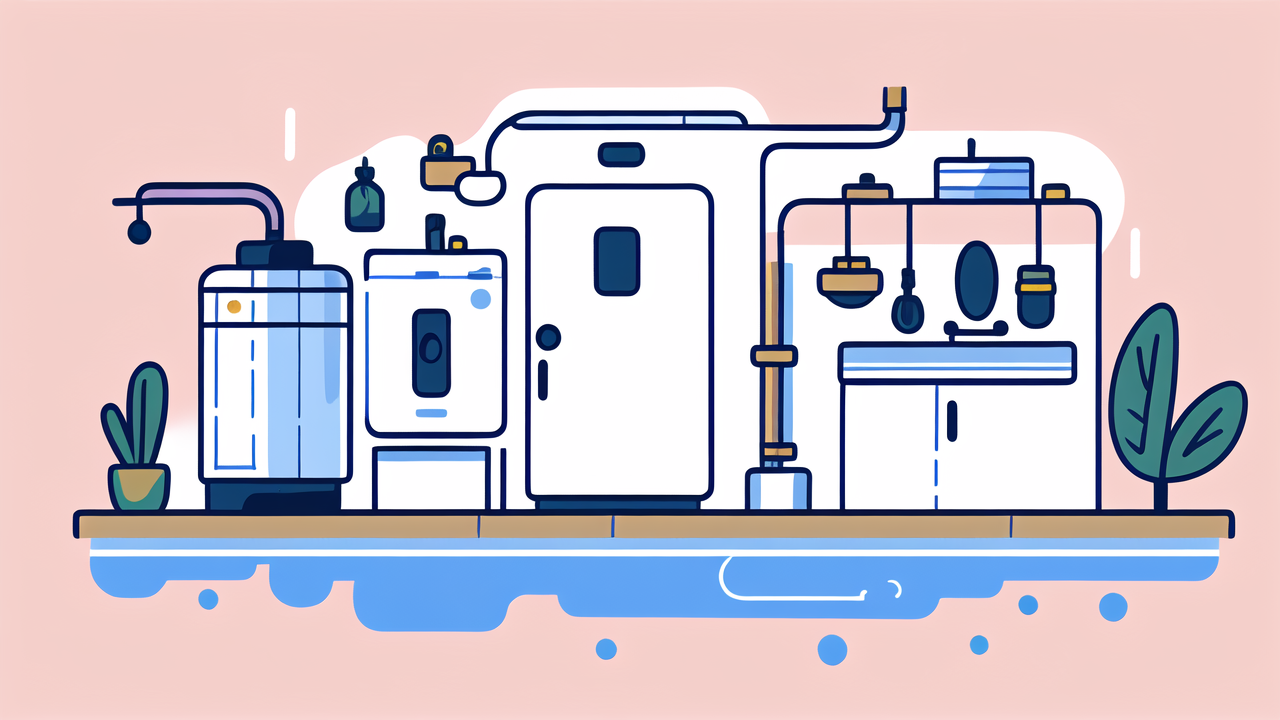Understanding the Role of 28cm Water Pipes in Home Plumbing
The Importance of Water Pipe Sizing
Water pipe sizing plays a crucial role in home plumbing systems. It affects water flow, pressure, and overall efficiency. Choosing the right size is vital for optimal performance. 28cm water pipes offer a balance between flow and pressure. They can handle high water demand without compromising efficiency. Proper sizing ensures consistent water supply throughout the house. It prevents issues like low pressure and slow drainage. Homeowners should consider their water usage needs when selecting pipe sizes. Consulting with a professional plumber can help make the best choice for your home.

How 28cm Water Pipes Enhance Water Distribution
28cm water pipes significantly improve water distribution in homes. They allow for a larger volume of water to flow through the system. This means faster filling of bathtubs, sinks, and appliances. Showers maintain consistent pressure, even when multiple taps are in use. These pipes reduce the risk of bottlenecks in the plumbing system. They ensure equal water distribution to all parts of the house. 28cm pipes are especially beneficial in larger homes or those with high water demands. They can handle peak usage times without a drop in performance. This enhanced distribution leads to a more comfortable and convenient living experience.
The Impact of Pipe Size on Water Pressure and Flow
Pipe size directly affects water pressure and flow in your home. 28cm pipes strike an ideal balance between the two. They maintain good pressure while allowing for high flow rates. This size prevents excessive pressure buildup, which can damage fixtures. It also ensures enough flow to meet household demands. With 28cm pipes, you're less likely to experience sudden pressure drops. This is particularly useful when multiple water outlets are used simultaneously. The consistent pressure and flow lead to better performance of water-dependent appliances. It also enhances the overall water usage experience in daily activities.
Cost-Effective Home Plumbing Solutions with 28cm Water Pipes
Exploring the Cost Savings of Using 28cm Pipes
Using 28cm water pipes can lead to significant cost savings over time. These pipes reduce the need for frequent repairs or replacements. Their larger diameter means less wear and tear from water flow. This results in a longer lifespan for your plumbing system. 28cm pipes also improve energy efficiency in water heating. Water moves through them more quickly, reducing heat loss. This can lower your energy bills. While the initial cost may be higher, the long-term savings are substantial. Homeowners can expect reduced maintenance costs and improved system longevity. These factors make 28cm pipes a cost-effective choice for Australian homes.

Balancing Quality and Affordability in Water Pipe Selection
When selecting water pipes, it's crucial to balance quality and affordability. 28cm pipes offer this balance effectively. They provide high-quality performance without breaking the bank. These pipes are durable and resistant to corrosion and leaks. This means fewer replacements and repairs in the long run. While they may cost more upfront, their longevity offers better value. Homeowners should consider the pipe material along with size. Materials like PVC or copper complement the benefits of 28cm pipes. Investing in quality pipes pays off through improved home value and reduced future expenses.
Incorporating 28cm Water Pipes into Your Energy-Efficient Home
28cm water pipes play a key role in creating an energy-efficient home. They contribute to better water management and reduced energy use. These pipes allow for more efficient water heating due to improved flow. This can lead to lower energy bills and a smaller carbon footprint. They work well with modern, energy-efficient appliances and fixtures. 28cm pipes support the use of low-flow faucets without compromising performance. They also enhance the efficiency of tankless water heaters. By incorporating these pipes, homeowners can create a more sustainable and eco-friendly living space.
Best Practices for Maintaining and Upgrading Your 28cm Water Pipes
Routine Maintenance for Long-Term Savings
Regular maintenance of 28cm water pipes is crucial for long-term savings. It helps prevent costly repairs and extends the system's lifespan. Homeowners should schedule annual inspections by a professional plumber. This can catch potential issues before they become major problems. Regular cleaning can prevent buildup and maintain optimal flow. Check for leaks and address them promptly to avoid water waste and damage. Insulating pipes in cold areas can prevent freezing and bursting. Simple steps like avoiding harsh chemicals in drains can protect pipe integrity. Proper maintenance ensures your 28cm pipes continue to operate efficiently for years.

When to Upgrade Your 28cm Water Pipes
Knowing when to upgrade your 28cm water pipes is important for maintaining efficiency. Signs that indicate it's time for an upgrade include frequent leaks or repairs. If your home's water pressure has decreased significantly, it might be time to check the pipes. Discolored water or strange odors can also signal pipe deterioration. Homes over 50 years old may need pipe replacement due to aging materials. If you're renovating or expanding your home, consider upgrading the pipes. Upgrading can improve water quality and increase your home's value. It's best to consult with a plumber to assess your specific needs.
Navigating the Upgrade Process Effectively
Upgrading to 28cm water pipes requires careful planning and execution. Start by assessing your current plumbing system and water needs. Consult with multiple licensed plumbers to get quotes and advice. Choose a reputable contractor with experience in 28cm pipe installations. Plan the upgrade during a convenient time to minimize disruption to your household. Consider any necessary permits or approvals from local authorities. Discuss material options with your plumber to find the best fit for your home. Prepare for potential temporary water shutoffs during the installation process. After the upgrade, have the system thoroughly tested to ensure proper function. Proper planning can make the upgrade process smooth and hassle-free.










